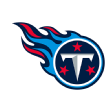It's incredibly difficult to project breakouts before they happen. When I looked at fantasy football sleeper columns in 2015, I found that they were mostly useless. Even if a player plays well in a small sample or exhibits some level of performance that seems tantalizing, the short season and high attrition rate create obstacles in the way of some of the most surefire breakouts.
What's easier and more reliable, instead, is looking at last season's breakouts and figuring out which of those seasons are likely to recur the following year. Some elements of a player's game just aren't sustainable from season to season, and the data can reveal a player with a significant chance of declining over a new season, though no number is perfect. More excitingly, there are also times we can find a breakout with no obvious flaw or reason to expect regression toward the mean.
Let's take a look at some of the most prominent breakout players at a variety of positions from 2017 -- you'll have to wait until next week for two young potential MVP candidates -- and see whether they're likely to keep things up in 2018. Can the Rams' stars keep their dynamic offense going? Are the ball hawks of the league going to find more prey in 2018? Let's find out by starting with the ball carriers:
Jump to a position: QBs | RBs | WRs | DL | DBs |
Running backs

Alvin Kamara, New Orleans Saints
Let's start with one player whom colleague Mike Clay covered in his column on touchdown regression. Kamara's celebrated debut campaign saw the Offensive Rookie of the Year score 13 times from scrimmage on just 212 touches, a rate that's going to be virtually impossible to sustain.
His overall efficiency, though, is going to be straight up impossible to keep up. The 23-year-old ran the ball 120 times for 728 yards, an average of more than 6.0 yards per carry. Think about all the great running backs you've seen over the course of your lifetime. In the modern NFL -- since the AFL-NFL merger -- just eight backs have pulled that off once during their careers. It's a list that includes O.J. Simpson, Barry Sanders, Jamaal Charles and Adrian Peterson.
Not a single one of those players pulled it off again during their careers, let alone in the following season. Not one of them made it to 100 carries while averaging even 5 yards per carry. Kamara is an extremely talented runner, but there are a few Hall of Famers on this list, and even they couldn't keep it up. While he could see more volume, he won't be able to keep this pace.
The third-round pick also caught 81 passes while averaging 10.2 yards per catch, which is remarkably high for a running back. The only back with a minimum of 60 catches last season to top that mark was Todd Gurley, who we'll get to in a minute. According to ESPN Stats & Information research, only 14 backs have topped those numbers since 2001. Again, it's a legitimate group of stars, which includes Le'Veon Bell, Brian Westbrook and Chris Johnson.
None of those guys was able to top 10.0 yards per reception with that sort of workload again. If we go back through 1970, I can find five players who pulled it off twice during their careers, and only four who did it in consecutive seasons: Keith Byars, Marshall Faulk, Herschel Walker and the delightfully named Amp Lee. Repeating his feat wouldn't be unprecedented, but Kamara would be the first back to pull this off since the turn of the century.
It's possible that Kamara could hit 1,554 yards from scrimmage and 13 touchdowns again, but it's going to take a larger workload for him to get there. The Saints might very well hand him that workload given that Mark Ingram will be suspended for four games to start the season, but even if Kamara's fantasy numbers look the same, the Saints can't expect him to be as effective on a carry-by-carry and catch-by-catch basis. And when Kamara isn't, it will drag down the effectiveness of what was one of the league's deadliest offenses a year ago.

Todd Gurley, Los Angeles Rams
Let's get to Gurley, who had an MVP-caliber campaign for the Rams in 2017. Earlier this summer, I wrote about how the Rams, as a team, would struggle to keep up their yards after catch, as they were the most YAC-happy team of the past decade before sitting their stars in Week 17. Gurley himself averaged 12.5 yards after catch, which is the most any player with 50 receptions or more has posted in a single season over the past decade -- by a full half-yard.
Clay covered Gurley's touchdown regression; the former first-round pick scored 19 touchdowns from scrimmage a year ago, six more than any other player. Nobody has done that in back-to-back years since 2006, and the players who were doing it were getting the sort of workloads that feel like they're from another era. Running backs who scored 19 or more touchdowns since the merger needed an average of 328 carries and 47 receptions to get there.
In a year in which the Rams won a lot of games and Gurley stayed on the field, he came 49 carries short of that total. If you think Sean McVay is going to run Gurley into the ground for personal milestones after just signing him to an extension, consider that he sat Gurley in Week 17 and cost his back any shot at an MVP award.
What is sustainable, though, is Gurley's rushing performance. I couldn't say that about his 2015 season, when Gurley averaged 4.8 yards per carry but was 36th in Football Outsiders' success rate statistic, which measures how frequently a back keeps his offense on schedule and moves the chains. Gurley's rushing numbers during that rookie season were inflated by six runs of 45 yards or more, or one every 38 carries or so. When the big runs disappeared in 2016 -- Gurley's longest run of a frustrating sophomore season was 24 yards -- his yards per carry collapsed to a minuscule 3.2-yard average.
Gurley was efficient last season, though. He had just one run longer than 45 yards and seven of more than 20 yards, but the former first-round pick was fifth in the league in success rate, at 53 percent. If he can retain that level of efficiency, Gurley might even add a couple of long runs to his collection in 2018 and improve his rushing average.

Kareem Hunt, Kansas City Chiefs
While Kamara won Offensive Rookie of the Year, all Hunt did in taking over for the injured Spencer Ware was win a rushing title. The No. 86 overall pick finished with 1,327 rushing yards on 272 attempts and turned his 53 receptions into 455 yards, scoring 11 total touchdowns. After fumbling on the first touch of his career, Hunt didn't fumble again. You could make a case that Hunt was the more productive player last season.
In a way, Hunt already regressed back toward the mean during the 2017 season. During the first month of the season, Hunt racked up four plays of 50 yards or more, three that went for scores. No running back had produced four 50-plus yard plays over an entire season since Adrian Peterson in 2012. It was pretty clear Hunt wasn't going to be able to keep that pace up, no matter how impressive the rookie had looked in his debut campaign.
Indeed, Hunt's longest play after Week 4 was for 35 yards, one of his two touches to top 30. After averaging 7.4 yards per rush and 12.1 yards per catch over the first month of the season, he racked up 4.0 yards per run and generated 7.5 yards per catch afterward, which were 24th and 21st among running backs, respectively. Hunt was a viable MVP candidate through four weeks ... and just a guy afterward.
Hunt's efficiency should lie somewhere between those two poles in 2018. Even top-tier running backs usually rack up no more than two 50-plus yard plays in a single season, so the safe projection for Hunt would be one huge gainer. The arrival of Patrick Mahomes makes everything about the Chiefs less certain, but I have another concern about Hunt that might reduce his ceiling: The Chiefs get to play with only one ball at a time.
I wrote that the Chiefs have the league's top set of weapons for Mahomes, and they're all going to have to get the football. Travis Kelce's target total has grown each season -- from 87 to 103 to 117 to 122. Tyreek Hill had 105 targets in his second season. The Chiefs are replacing Albert Wilson in the lineup with Sammy Watkins, and I strongly suspect that they're not paying Watkins $16 million per season with the expectation of throwing him 62 targets, as Wilson got a year ago. Ware is also back from injury and should demand more of the workload than Charcandrick West (45 touches) did a year ago.
The 23-year-old Hunt touched the ball 325 times as a rookie. Andy Reid has worked with some talented running backs in his 19 years as a head coach, but that's the fourth-highest total for any back under Reid, behind Brian Westbrook (368 touches in 2007), Duce Staley (366 touches in 1999) and Jamaal Charles (329 touches in 2013). Staley and Westbrook got back above 300 one more time, but Reid doesn't tend to overwork his running backs. A healthy Hunt is probably looking at something between 275 and 300 touches in his sophomore campaign with a downtick in overall rushing efficiency.
Pass-rushers

DeMarcus Lawrence, Dallas Cowboys
While Lawrence's 14.5-sack season might seem like it came out of nowhere, it's not as much of a shock when you remember that the 2014 second-rounder racked up eight sacks during the 2015 campaign. The season after was a loss, with Lawrence starting the year suspended and finishing with a back injury -- he had only one sack while playing 31.1 percent of Dallas' defensive snaps.
In the past, I've found that one useful measure in predicting sack totals is to use a defensive lineman's quarterback knockdowns (or hits) from the previous season. Typically, a pass-rusher will turn about 45 percent of their hits into sacks in a given year. Players who post a high sack total with few hits tend to decline, as was the case with Vic Beasley Jr. a year ago. Beasley had 15.5 sacks on 16 hits; last season, while he still managed to somehow turn 100 percent of his knockdowns into sacks, he took down the quarterback only five times.
The good news for Lawrence is that his sack total is in line with his hits, given that the Cowboys star racked up 26 hits last season. Using the 45 percent measure, we would estimate that Lawrence should have racked up about 11.7 sacks last season. It's not quite 14.5 sacks, but it's close enough that Lawrence's double-digit sack production seems legitimate. It would not be a surprise to see him top 10 sacks again in 2018.
One way he should drop off, though, is in sack yardage. Lawrence's 14.5 sacks generated 160 lost yards, the highest total in the league since Jason Taylor made it to 162.5 yards in 2002. There were 16 sacks in the NFL of 15 yards or more last season, and Lawrence had three of them, including the longest takedown of 2017, when Lawrence sacked Russell Wilson for 22 yards. Lawrence should be productive, but he won't hit 160 yards again.

Yannick Ngakoue, Jacksonville Jaguars
No team has invested more in its defensive line over the past several seasons than the Jaguars, but their decision to draft Ngakoue in the third round of the 2016 draft has delivered the most bang for its buck. The Maryland product quickly passed Dante Fowler as a rookie and racked up eight sacks before bumping that total to 12 last season. Ngakoue benefits from playing alongside great teammates, of course, but he's a legit pass-rusher.
He also has developed a deserved reputation for both bringing down the quarterback and taking the football with him. He racked up four forced fumbles on eight sacks as a rookie, then generated a league-high six on those 12 sacks as a sophomore. After some complicated division, I've found that he turns about 50 percent of his sacks into forced fumbles, which is an impressive feat.
Can he keep that up? While Ngakoue has been a strip machine in his first two seasons, history says forced fumbles are too erratic to keep up that rate. Since 2006, 13 other players besides Ngakoue have racked up 10 or more sacks in a season while turning more than half of their sacks into forced fumbles. In their fumble-heavy season, our sack masters produced forced fumbles on more than 57 percent of their sacks.
The next year? Those same players produced an impressive 103.5 sacks but a mere 27 forced fumbles, for a batting average of just over 26 percent. That's actually below the global league average, which comes in just under 30 percent. Ngakoue is likely to have another five-strip season or two before he hangs up his cleats, but it's too difficult to pull off high sack totals and high forced fumble marks on a year-after-year basis.

Aaron Donald, Los Angeles Rams
Scary as it might seem, Donald's "breakout" season in terms of hardware might have been just another season from the league's most terrifying interior disruptor. The reigning Defensive Player of the Year wreaked havoc in 2017. He sat out the opener after his holdout and took off the meaningless Week 17 game against the 49ers, but in between, Donald racked up 11 sacks in 14 games. He forced five fumbles, knocked down opposing quarterbacks 27 times, and chipped in 15 tackles for loss. Snap after snap, week after week, Donald was a problem.
Here's the bad news for NFC West quarterbacks, though: There's nothing in Donald's profile suggesting he can't keep this up again in 2018. If anything, Donald's hit total suggests he should have had 12 sacks, not 11. He racked up 68 quarterback hits between 2015 and 2016, so 2017 wasn't even Donald's best season as a pro. Scary as it might seem, Donald could be even more productive alongside Ndamukong Suh.
Wide receivers

Adam Thielen, Minnesota Vikings
No wideout had a more surprising season than Thielen, who went from nearly being replaced in the starting lineup by would-be free-agent addition Alshon Jeffery to breaking out with a 91-catch, 1,276-yard campaign. The 27-year-old finished fifth in the league in receiving yards and is signed to what might be the best veteran contract in football, given that he has three years and $15.5 million remaining on his extension from last offseason.
The good news for Vikings fans is that Thielen actually underperformed in one way last season: his 91 catches produced only four touchdowns. Receivers with that sort of volume -- players who have caught 90 passes or more in a season since the merger -- score about once 11.5 catches or so. Typically, Thielen's 91 catches would turn into an eight-touchdown campaign. He should score more frequently in 2018.

Sammy Watkins, Kansas City Chiefs
On the other hand, there's Watkins, whose average annual salary of $16 million is slightly more than what Thielen is set to make over the next three years. The former fourth overall pick still seems to have plenty of untapped upside, and while he didn't blow away the Rams last season, Watkins still managed to score eight touchdowns on just 39 receptions.
You might argue that Watkins made the most of his receptions, but let's look at his stats in the red zone. Here are the receivers who caught the most touchdowns in the red zone in 2018, and the number of targets it took them to get there:
Does Watkins stand out a bit? During his time in Buffalo, Watkins scored just five red zone touchdowns on 19 targets, so there's nothing suggesting the Clemson product is some secret Gronkowski laboratory experiment. If Watkins wants to get to eight or more touchdowns again, he'll have to break 40 receptions.

Marvin Jones Jr., Detroit Lions
Do you know who led the league in yards per reception last season? You could probably guess: It was Jones, who racked up 18 yards per catch while producing his first 1,000-yard season. He did that in an offense in which Matthew Stafford throws relatively short passes; consider that while Jones averaged 14.9 air yards per target, fellow starting wideout Golden Tate's average pass traveled just 5.9 yards in the air, while departed tight end Eric Ebron was at 7.5 air yards per throw.
Can Jones keep that up? Evidence suggests it will be tough. For one, Jones dropped just one of the 107 targets thrown his way in 2018, which is difficult for any pass-catcher to keep up year after year. In 2016, Jones' drop rate was 6.8 percent, the eighth-highest mark in the league among wideouts with 50 targets or more. His drop rate in Cincinnati was 2.9 percent, and Jones is likely to fall somewhere around that percentage in 2018.
It will be difficult for Jones to be as dominant downfield. He caught 13 passes on ultra-deep passes (26 or more yards in the air) last season, which tied him with Tyreek Hill for the league lead. No other player had more than nine. Jones had just 15 such catches combined over his first five seasons in the league. Players can improve, of course, but Jones' role hasn't grown dramatically, given that he had 103 targets in both 2015 and 2016 before rising modestly to 107 last year. He's likely to take a step backward in 2018.
Defensive backs

Kevin Byard, S, Tennessee Titans
The Titans found a lot of reasons to be frustrated despite their 9-7 record and a playoff win last season. One person they can't find any fault in, though, is Byard. The second-year safety broke out with a stunning eight-interception season, earning him a spot as a first-team All-Pro. The season might have ended with the former third-round pick struggling to hold up against Rob Gronkowski, but that also describes approximately every other safety in football when they're matched up against the future Hall of Fame tight end.
Can Byard continue to be a ball hawk for the Titans? Probably not to this extent. If you look through Byard's interceptions from a year ago, you'll see a lot of plays in which he was handed gifts by truly awful quarterback play. Byard still had to catch those passes, of course, but it's tough to count on five or six overthrows heading your way each year.
Byard is not alone in this, of course; it's virtually impossible in the modern league for a defensive back to rack up that sort of interception total on an annual basis. Since 1990, 48 other players have produced eight or more interceptions in a given season. Just 12 of those players have accomplished the feat more than once, and a mere three -- Keith Lyle, Champ Bailey and Richard Sherman -- have pulled it off in consecutive seasons.
The Football Outsiders Almanac notes that the Titans might end up finding their interceptions from a different source. While Byard tied for the league lead, Tennessee's 2.0 percent interception rate was just 10th in the NFL. While Byard had eight picks, the rest of the Tennessee roster mustered only four. While their star safety is likely to fall back to the pack in 2018, the Titans should also see the likes of Malcolm Butler, Adoree' Jackson and Logan Ryan making up for the decline.

Darius Slay, CB, Detroit Lions
Likewise, Big Play Slay probably won't have as many big plays in 2018. While the Mississippi State product has emerged as one of the league's best cornerbacks, Slay racked up just six interceptions over his first four seasons in the NFL, never producing more than two in a single campaign. Last season, Slay managed to take away eight footballs, victimizing both Matt Ryan and Mitchell Trubisky twice. History suggests he's more likely to fall in the two-to-four range this season.
Quarterbacks

Case Keenum, Denver Broncos
It's hard to believe that Keenum could even have envisioned what happened last season. Signed by the Vikings to serve as a short-term backup between Sam Bradford and the return of Teddy Bridgewater, Keenum ended up taking over for Bradford in Week 2 before claiming the job for good after Bradford re-injured his knee against the Bears in Week 5. When the dust settled, Keenum finished the year second in Total QBR (71.3), seventh in passer rating (98.3) and seventh in adjusted net yards per attempt (7.03), which weights interceptions and touchdowns more accurately than passer rating while also accounting for sack yardage.
Can Keenum keep that up in his new digs? It depends. Last season proved that Keenum has the upside to succeed in the right situation, but the Broncos will have to expect some regression, particularly with giveaways. Before 2017, Keenum had produced a career interception rate of 2.6 percent while fumbling 15 times across 24 starts. Last year, though, Keenum threw interceptions on just 1.5 percent of his passes and fumbled once in 14 starts.
The Vikings rarely put Keenum in spots in which he had to throw his team back into the game, which is a way to inflate counting stats but also to encounter turnovers. It's easier to hold onto the football when teams don't know what's coming and defensive linemen have to honor the threat of the run. The Vikings also had a solid offensive line, while the Broncos spent the offseason again retooling their tackle situation by acquiring Jared Veldheer from the Cardinals.
It's likely that Keenum will turn the ball over more frequently in 2018, and after completing just 58.4 percent of his passes before 2017, that 67.6 percent rate from a year ago also seems like an outlier. The extent to which he regresses should depend upon how the Broncos support him and keep him in positive game situations.

Jared Goff, Los Angeles Rams
Written off after an ugly rookie season, Goff flourished under the tutelage of Sean McVay and produced a remarkable first full season as a starter. He pushed his passer rating from 63.6 to 100.5, the third-largest increase among passers with 200 attempts or more since 2001. Only Nick Foles and Drew Brees had larger season-to-season improvements over that time frame than Goff.
Projecting his 2018 season is tricky. Let's start with the interceptions. Goff threw seven on 205 pass attempts as a rookie. Not good. He followed it by throwing seven on 477 pass attempts last season. Much better. Goff's interception rate fell from 3.4 percent all the way down to 1.5 percent. Interception rates under 2 percent aren't infeasible in the modern NFL, but unless you're Tom Brady or Alex Smith, it's tough to count on avoiding interceptions at that rate. Goff will probably come in just better than 2 percent in a typical season.
There's also the YAC problem, which I wrote about in discussing the Todd Gurley and Brandin Cooks extensions earlier this summer. No team over the past decade averaged more yards after catch than the Rams did during the first 15 games of their 2017 season with Goff in the lineup. (They fell to fifth after benching their stars in Week 17.) That's not going to be sustainable year after year.
On the other hand, the Rams are replacing Watkins in the lineup with Cooks, who should be an upgrade as both a target and a distraction for opposing defensive backs. Goff probably is going to throw the ball more. The arrival of Cooks and the added volume should improve Goff's cumulative numbers, but it will be tough for him to be more efficient than he was in 2017.

Alex Smith, QB, Washington
Smith didn't break out as much as he changed his stripes. Famously reticent to throw the ball downfield, Smith took aim to Tyreek Hill & Co. and found that he, too, was capable of creating big plays. After averaging just less than 25 completions per year on deep passes (16-plus yards downfield) from 2012-16, Smith completed 47 such passes last season, which was tied for fifth in the league. He threw 13 touchdowns against one pick on those plays, good for the best TD-to-INT ratio on deep passes in football. (The rest of the league threw 214 touchdown passes against 177 interceptions on those same passes.)
Can he keep that up in Washington? Smith hadn't been that sort of quarterback at any point previously during his career, and he won't have the weapons Andy Reid gifted him in Kansas City. Jordan Reed has Travis Kelce-ish upside, but he's rarely healthy. Josh Doctson and Paul Richardson have the pedigree to make plays downfield, but neither has been particularly healthy or impressive so far in their pro careers. Smith's most likely targets are Chris Thompson and Jamison Crowder, both of whom are midrange weapons. It seems likely we'll see a return to the conservative Smith of years past.
There are plenty of other players who broke out in 2018, of course. I'll be taking a closer look at Deshaun Watson and Carson Wentz later this month as we project what they're likely to do in 2018.
